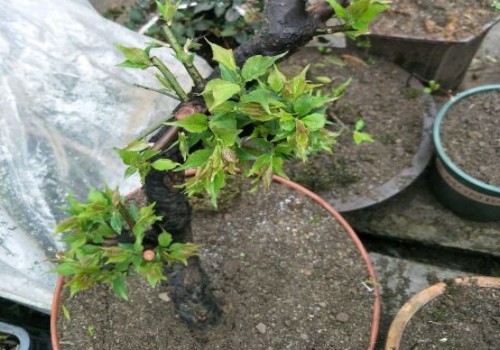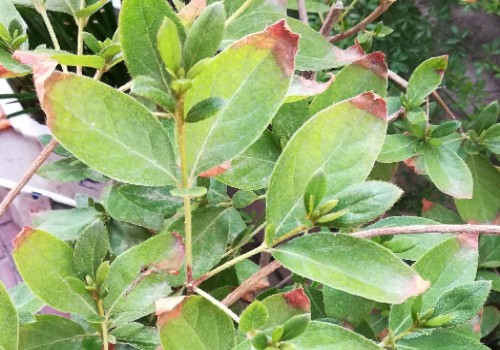Understanding the habits of plants and the reasons for maintaining the dry shoots of plum blossoms after transplanting
Plum blossoms have been loved by the public since ancient times. For those who like potted plants and flowers, potted plum blossoms are a good choice. Potted plum blossoms can not only enjoy the flowers, but also bring infinite positive energy to people with a positive temperament. But many potted friends like online shopping of plum blossom saplings back to potted plants, which naturally can not avoid transplanting on the pot, after all, the original pot is unable to raise plum blossoms for a long time.
For flowers and plants, transplanting is a risky work, if it is not handled properly, it will prolong the time of slow seedling service, or seriously, it may lead to transplanting failure, and the direct consequence is to let the plant die. Recently, some potted friends had problems after transplanting plum blossoms. the plants wilted more and more day by day, the withered degree of branches and leaves deepened, and even the phenomenon of dry shoots appeared. So, what is the reason for the dry tip of plum blossom after transplanting?
As the editor has just mentioned, transplanting flowers and plants is a time-consuming, laborious and risky thing. Therefore, the operation method must be correct and must be implemented in accordance with the standard process, otherwise the plant will be difficult to survive or die directly. However, for the plum blossom which has just been transplanted into the pot, it may also be a normal phenomenon if the plant wilts slightly in a short period of time, especially the leaves are sagging and drooping.
Because after the plant moved the pot, it suddenly changed from the original environment to the new environment, the original plant needs to go through a slow seedling process to adapt to the new environment. In addition, the root system of the plant has not yet returned to the normal absorption capacity at this time, and can not smoothly supply water and fertilizer, so the plant is also more prone to mild wilting and drooping. At this time, we can cut off some branches and leaves of the plant to reduce the burden on the roots, so that it is easier to survive.
In general, if the branches and leaves of the plant begin to recover gradually after a period of time, as long as we strengthen the management according to the correct maintenance method, there is no problem for the plant to survive. On the other hand, the slight wilting and drooping state of the plant will gradually disappear. However, if the plant still appears this condition after a long time, and even the bad symptoms are still deepening and becoming serious, even some branches have become dry. In that case, we should pay enough attention to it. Because at this time the plant may have the problem of survival in the pot.
The reason for this situation is generally due to the damage to the roots of the plant in the process of transplanting and potting. Whether it is the injury of a large number of roots in the process of transplanting or the rotting roots caused by giving water and fertilizer prematurely, it will bring trouble to the survival of the plant, and may even make the plant die. Therefore, we need to take remedial measures in time.
First of all, we need to take the plant out of the pot, carefully check the damage to the roots, cut off the rotten roots in time, then sterilize the wound, and suggest using a little rooting agent or rooting powder on the roots. And then return to the basin according to the standard process. However, if there are more branches and leaves, it is recommended to cut off some of the branches and leaves that are too tall and too long, which can reduce the plant's own consumption, especially the burden on the roots.
- Prev

What kind of soil do plum blossoms like? how to distinguish the body characteristics of plants?
Plum blossom has been deeply loved by the public for its unique temperament and quaint charm since ancient times, and its ornamental value is also very high, especially as a bonsai masterpiece, it has won a lot of praise. But the growth of post-anthesis plants is often inseparable from the soil.
- Next

Understanding the habits of plants what is the reason for the exhaustion of red leaf tips in Yingshan?
The ornamental value of red on the potted plant is very high, so it is deeply loved by the public, but those who have a little experience in planting and breeding often like to plant it as a family pot. As a matter of fact, Yingshanhong should master some routine skills in order to get there.
Related
- What if the leaves of potted flowers turn yellow?
- Florescence Control of several Flowers
- Anti-freezing technology and post-freezing nursing technology of flowers
- What is the classification of flowers? What are the common methods of flower classification?
- Prevention and control of alkali and acid damage of flowers in courtyard
- Technology of Anti-freezing and restoring growth of Flower seedlings in greenhouse and greenhouse
- How does flower fertilization not hurt the root? Fertilization technology of flowers
- Key points of disinfection in flower greenhouse
- Several pesticides that are banned or used cautiously in flowers
- How to fertilize the flowers that watch the leaves?

